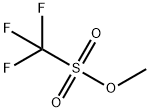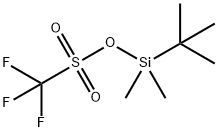Sulphur
- CAS NO.:63705-05-5
- Empirical Formula: S
- Molecular Weight: 0
- SAFETY DATA SHEET (SDS)
- Update Date: 2023-05-04 17:34:40

What is Sulphur?
Chemical properties
Sulfur is a yellow crystalline solid or powder. Often transported in the molten state.
The Uses of Sulphur
Organic sulfur compounds occur in garlic, mustard, onions, and cabbage and are responsible for the odor of skunks. Sulfur occurs in living tissue and is part of some amino acids. Unlike many other inorganic elements, sulfur itself is relatively nontoxic. Sulfur and some of its salts have been used medicinally. Organosulfur compounds, such as diallyl disulfide, exhibit antiproliferative effects on cancer cells. The consumption of sulfur is a measure of national industrial development and economic activity. Sulfur is most often used as a chemical reagent, rather than as part of a finished product. In the United States,about 90% of sulfur consumed was in the form of sulfuric acid. Agricultural chemicals (primarily fertilizers) comprised about 62% of sulfur demand; petroleum refining, 26%; and metal mining, 5%.
Production Methods
Sulfur (S) occurs naturally as a yellow, water-insoluble solid. The name is from the Latin “sulphur.” Early Greek physicians mention sulfur and the fumes from burning sulfur in religious ceremonies.Sulfur can be extracted from crude oil in the refining process, as well as from stack gases resulting from coal combustion. Sulfur occurs in fossil fuels and in metal (Fe, Pb) ores. The world resources of elemental sulfur in evaporate and volcanic deposits and sulfur associated with natural gas, petroleum, tar sands, and metal sulfides equal about 5 billion ton. The sulfur in gypsum and anhydrite is almost limitless; about 600 billion ton of sulfur is present in coal, oil shale, and shale rich in organic matter. However, recovery of sulfur from these sources poses an economic challenge due to lack of low-cost technologies. The U.S. sulfur resource is estimated at about one-fifth of the world total. Exposure may occur in numerous operations related to the mining and recovery of sulfur.
Definition
ChEBI: Sulfur atom is a nonmetal atom and a chalcogen. It has a role as a macronutrient.
Health Hazard
Sulfur is present in every cell in the body, primarily in proteins containing the amino acids methionine, cystine, and cysteine. Inorganic sulfates and sulfides occur in small amounts relative to total body sulfur, but the compounds that contain them are important to metabolism. Sulfur intake is thought to be adequate if protein intake is adequate and sulfur deficiency has not been reported.
Although sulfur is in the same group of the Periodic Table, Group 16(VIA), as oxygen, sulfur functions much more like phosphorus, Group 15(VA), in biological systems. In fat metabolism, sulfur plays a key role analogous to that of phosphorus in carbohydrate metabolism. Fatty acid synthesis and degradation begin and end with the same compound, acetyl-S coenzyme A (acetyl–SCoA).
Potential Exposure
Widely used in manufacture of sulfuric acid; carbon bisulfide; drugs, fungicides, gunpowder, wood pulp; rubber, and other products.
Shipping
UN1350 Sulfur, Hazard Class: 4.1; Labels: 4.1-Flammable solid (International). NA1350 Sulfur, Hazard class: 9; Labels: 9-Miscellaneous hazardous material (Domestic). UN2448 Sulfur, molten, Hazard Class: 4.1; Labels: 4.1-Flammable solid (International). NA 2448 Sulfur, molten Hazard class: 9; Labels: 9-Miscellaneous hazardous material (Domestic).
Incompatibilities
Widely used in manufacture of sulfuric acid; carbon bisulfide; drugs, fungicides, gunpowder, wood pulp; rubber, and other products.
Waste Disposal
Salvage for reprocessing or dump to landfill.
Safety information for Sulphur
New Products
(S)-3-Aminobutanenitrile hydrochloride 4-Methylphenylacetic acid N-Boc-D-alaninol N-BOC-D/L-ALANINOL Tert-butyl bis(2-chloroethyl)carbamate 3-Morpholino-1-(4-nitrophenyl)-5,6-dihydropyridin- 2(1H)-one Furan-2,5-Dicarboxylic Acid Tropic acid 1-Bromo-3,5-Di-Tert-Butylbenzene S-2-CHLORO PROPIONIC ACID ETHYL ISOCYANOACETATE 2-Bromo-1,3-Bis(Dimethylamino)Trimethinium Hexafluorophosphate 4-IODO BENZOIC ACID 3-NITRO-2-METHYL ANILINE 1-(2,4-DICHLOROPHENYL) ETHANAMINE (2-Hydroxyphenyl)acetonitrile 4-Bromopyrazole 2-(Cyanocyclohexyl)acetic acid 4-methoxy-3,5-dinitropyridine 1-(4-(aminomethyl)benzyl)urea hydrochloride 2-aminopropyl benzoate hydrochloride diethyl 2-(2-((tertbutoxycarbonyl)amino) ethyl)malonate tert-butyl 4- (ureidomethyl)benzylcarbamate Ethyl-2-chloro((4-methoxyphenyl)hydrazono)acetateRelated products of tetrahydrofuran








You may like
-
 2033-24-1 98%View Details
2033-24-1 98%View Details
2033-24-1 -
 42831-50-5 5-METHYLISOXAZOLE-4-CARBOXYLIC ACID 98%View Details
42831-50-5 5-METHYLISOXAZOLE-4-CARBOXYLIC ACID 98%View Details
42831-50-5 -
 1975-50-4 98%View Details
1975-50-4 98%View Details
1975-50-4 -
 2-HYDROXY BENZYL ALCOHOL 98%View Details
2-HYDROXY BENZYL ALCOHOL 98%View Details
90-01-7 -
 2-Chloro-1,3-Bis(Dimethylamino)Trimethinium Hexafluorophosphate 221615-75-4 98%View Details
2-Chloro-1,3-Bis(Dimethylamino)Trimethinium Hexafluorophosphate 221615-75-4 98%View Details
221615-75-4 -
 61397-56-6 CIS BROMO BENZOATE 98%View Details
61397-56-6 CIS BROMO BENZOATE 98%View Details
61397-56-6 -
 14714-50-2 (2-Hydroxyphenyl)acetonitrile 98+View Details
14714-50-2 (2-Hydroxyphenyl)acetonitrile 98+View Details
14714-50-2 -
 118753-70-1 98+View Details
118753-70-1 98+View Details
118753-70-1